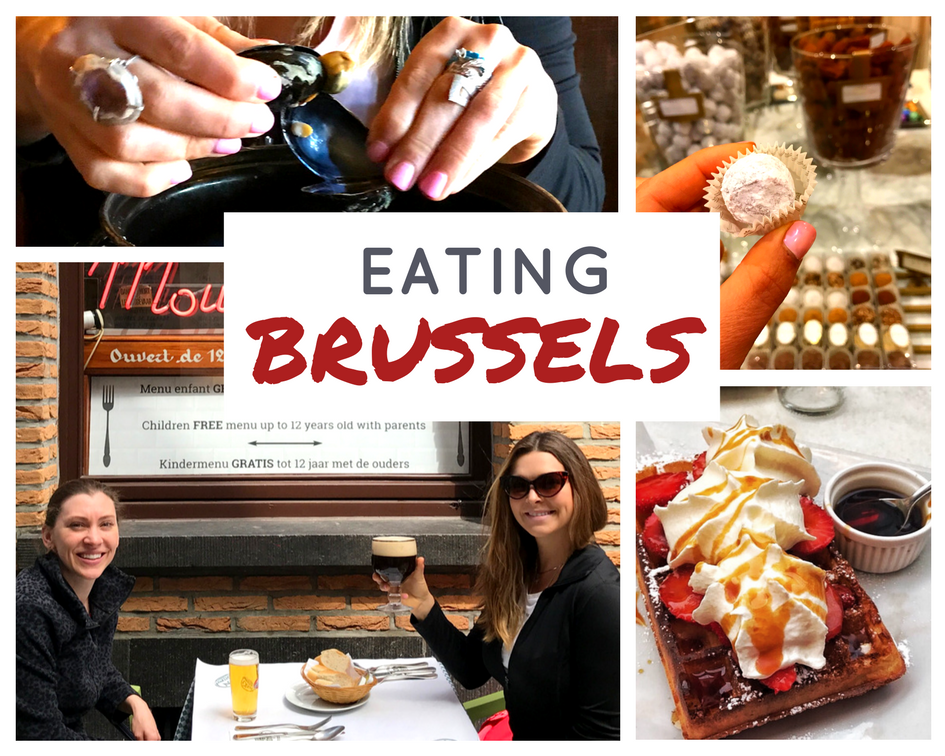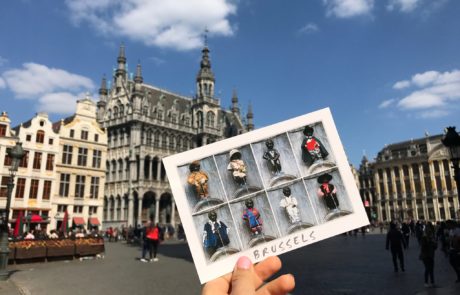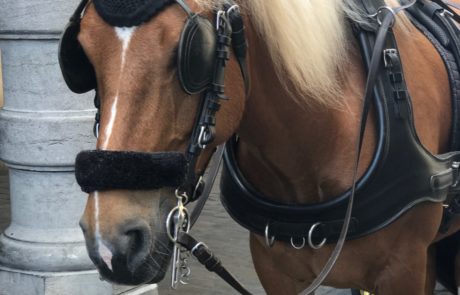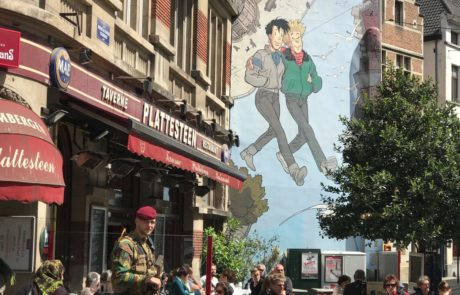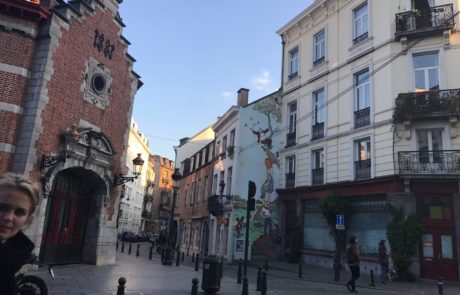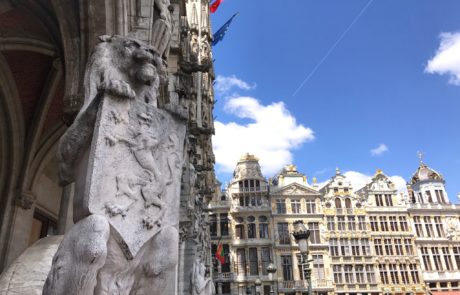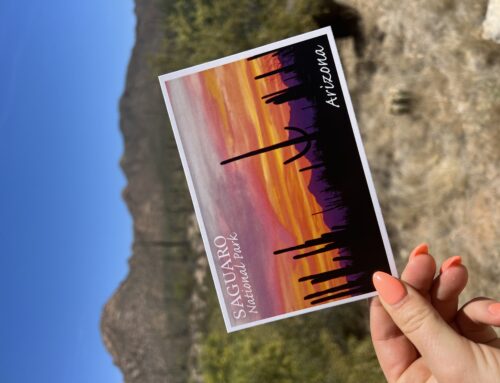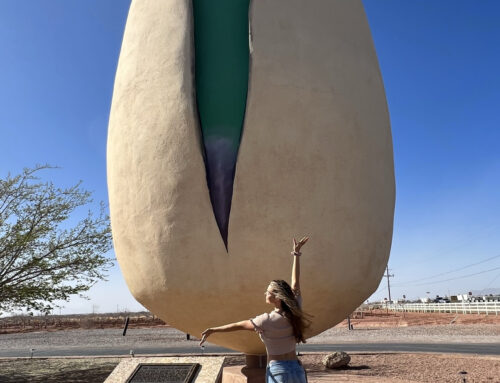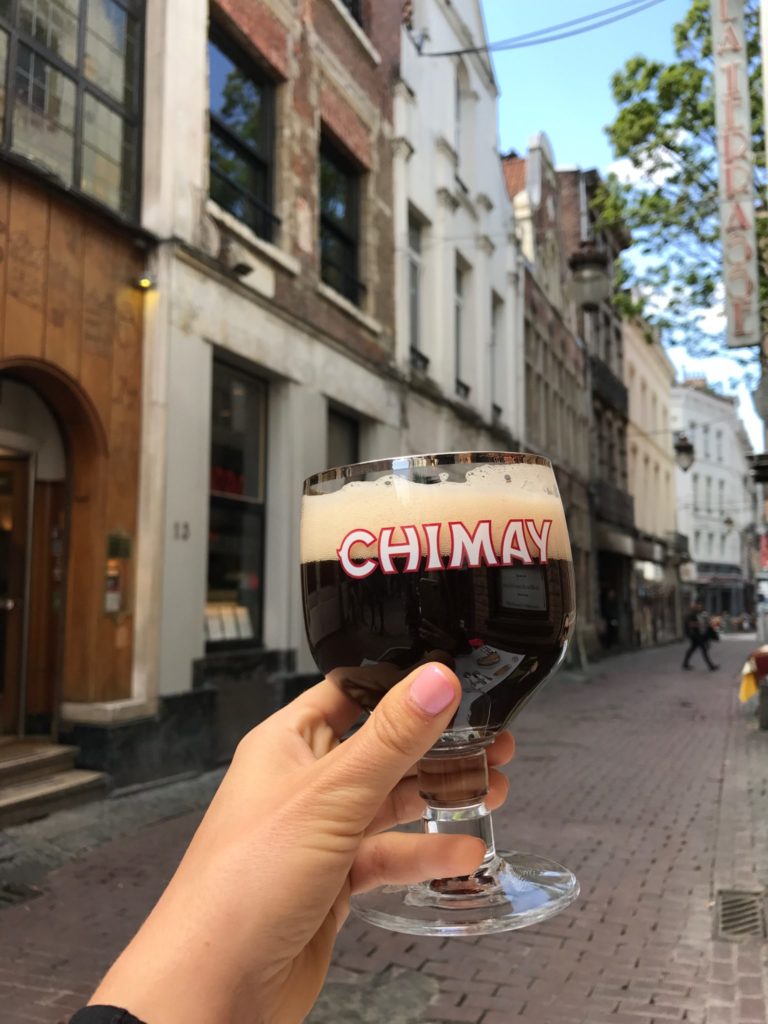
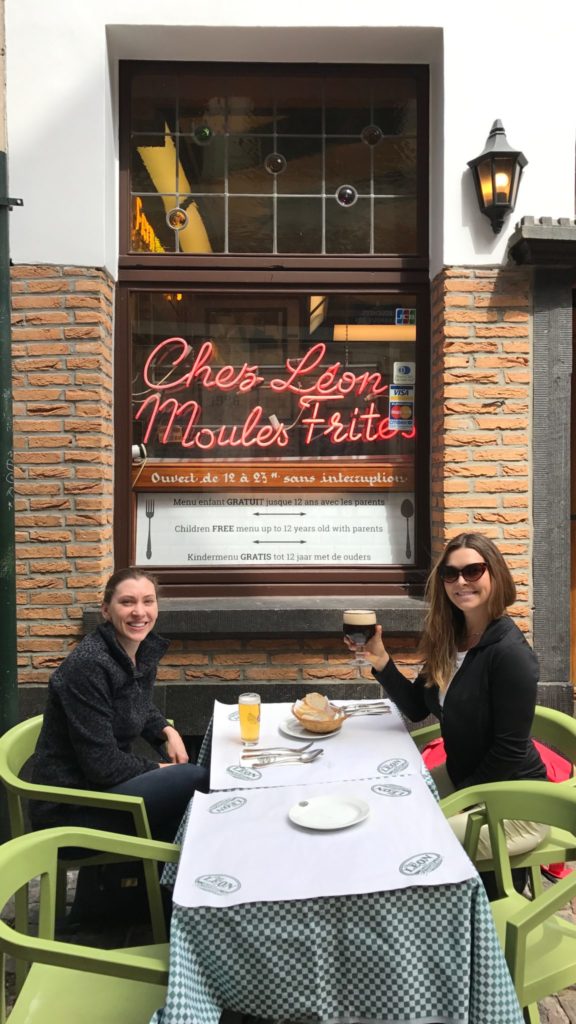
When it comes to food choices, Brussels has it all! It’s famous for both it’s sweet and savory bites and I was determined to spend my 24 hours in the Capital city of Belgium trying them all!
The country is relatively small compared to it’s neighboring countries of Germany, the Netherlands, and France. Even though much of what Belgian’s eat can be found in the surrounding regions, the nation has some classic dishes that simply must be eaten when you are visiting.
I believe consuming local food and drink are a great way to understand the local culture and the most efficient way to get a bit of everything is to take a food tour! So, after noshing on a pot full of mussels at Chez Lion, my friend and I booked a private food tour.
For 250 euro we spent four hours walking the heart of the city with a local guide who not only fed us but also nourished our minds history of the food, described the history of the city, the design of the buildings and showed us three well-known peeing statues. For this price, we tried 5 types of beer, two chocolates, ate a full dinner with three entree samples, two chocolatiers, and one waffle. I was stuffed and practically needed to be rolled back our AirBNB.
Moules Frites
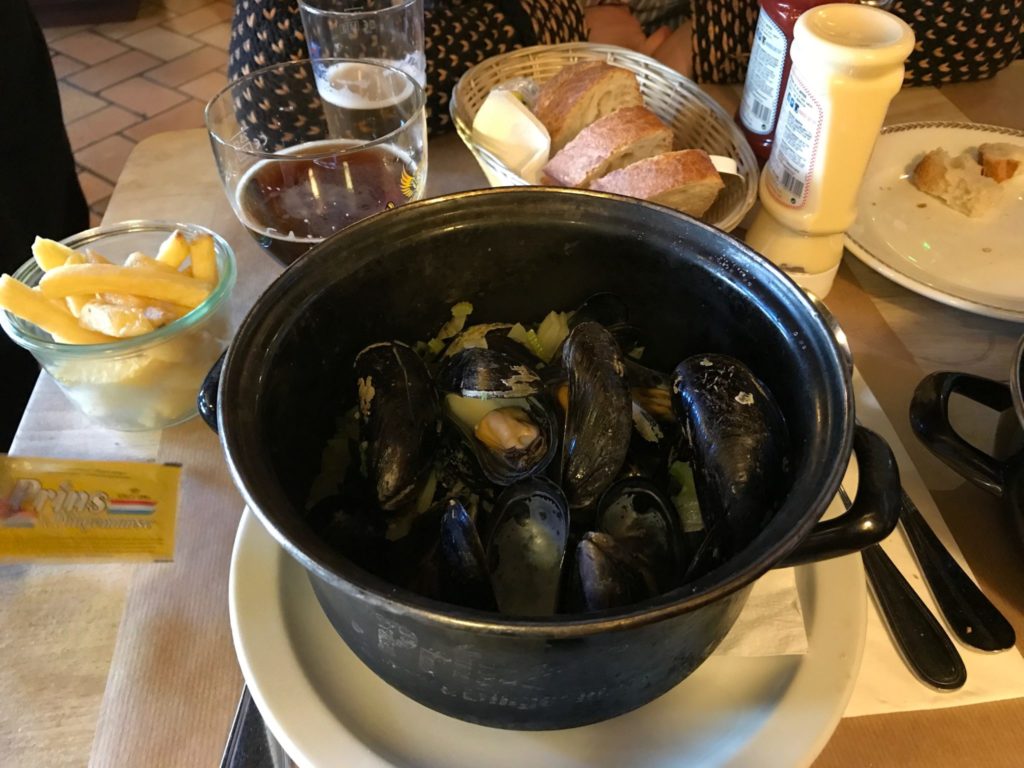
Translated into English as mussels and fries, this exceptional dish is made with a variety of sauces and is a must eat while in Belgium! I love this dish so much that I ate it twice.
The dish originated along the Flemish coast as an inexpensive meal with fried potatoes being the main food source during cold winters. On average, 30 tons of mussels are consumed in Belgium alone. My taste buds and belly were happy to add to this count!.
At Chez Leon, I ordered the Plancha which combined squid, tomatoes, white wine, Provence herbs, garlic and butter with mussels for 22.95 euro.
During our food tour with Global Tour Enterprises, we were served one kilo each of Moules natures at La Rose Blanche. This is a simple dish with leeks, celery, and butter steamed with the mussels.
Each pot of mussels was served with a side of frites and homemade mayonnaise! If you love this condiment, Belgium is for you because they have varieties of blends to satiate any palate.
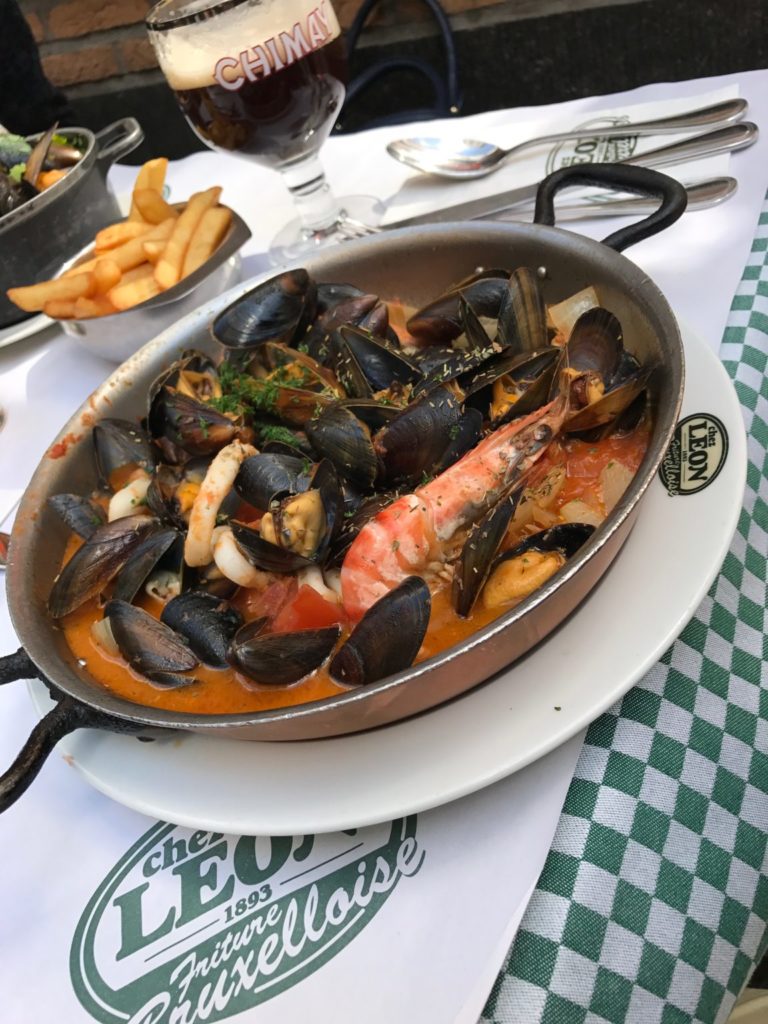
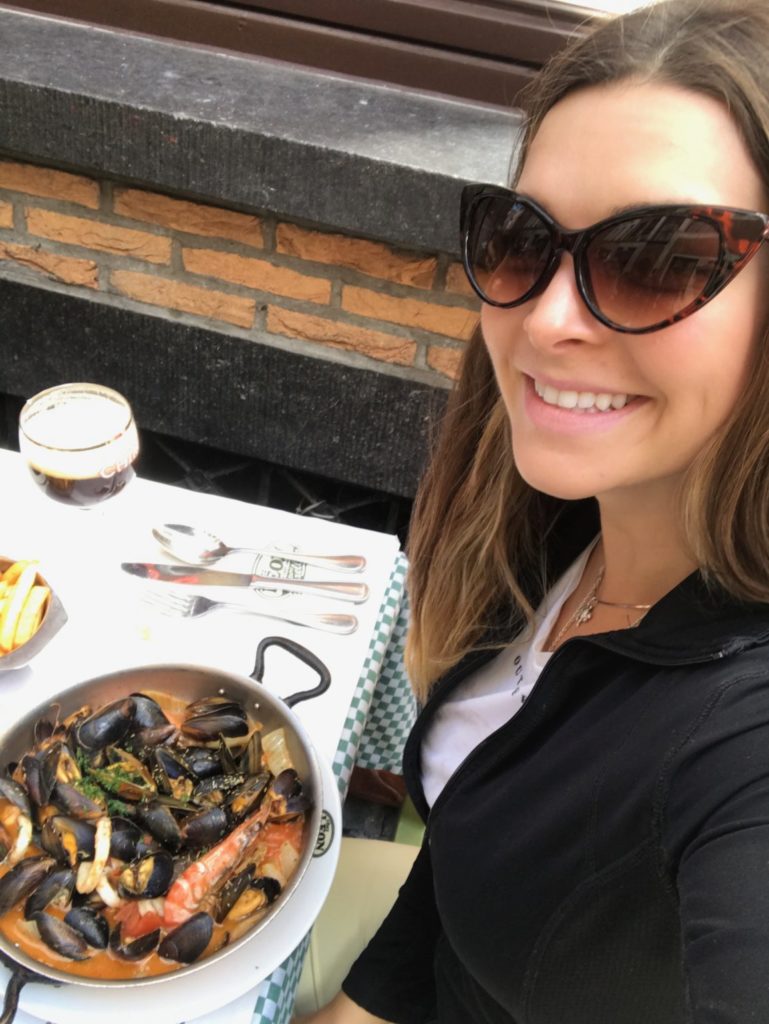
Tip: Eat Mussels Like a Local
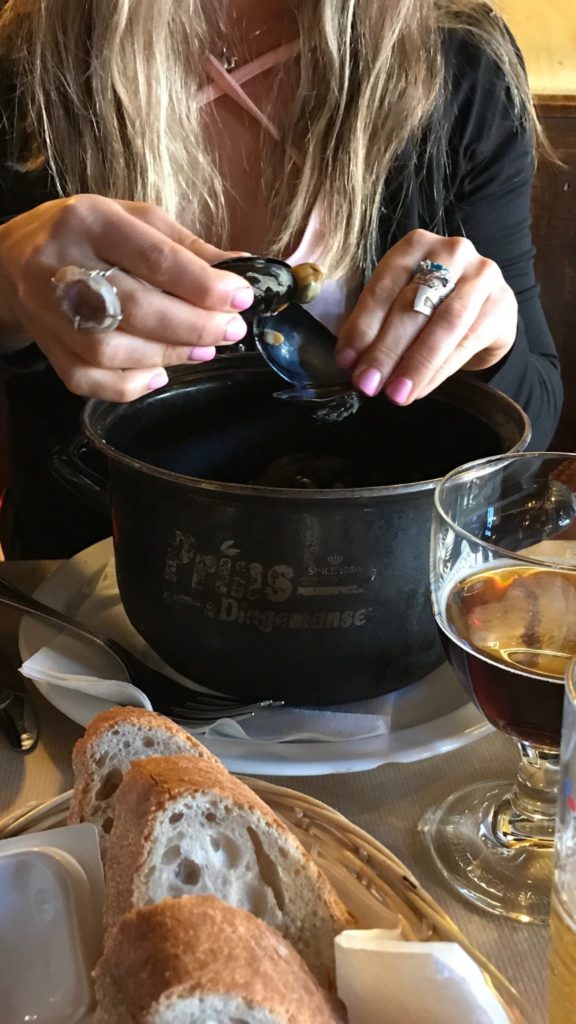
To simply eating mussels, put down your utensils and grab and empty shell. Use the empty shell as a pick to remove the meat from other shells. Thank you, Guide Alex, for this useful trick! It’s easier and quicker to eat this delicious aphrodisiac this way!
Chicken Waterzooi
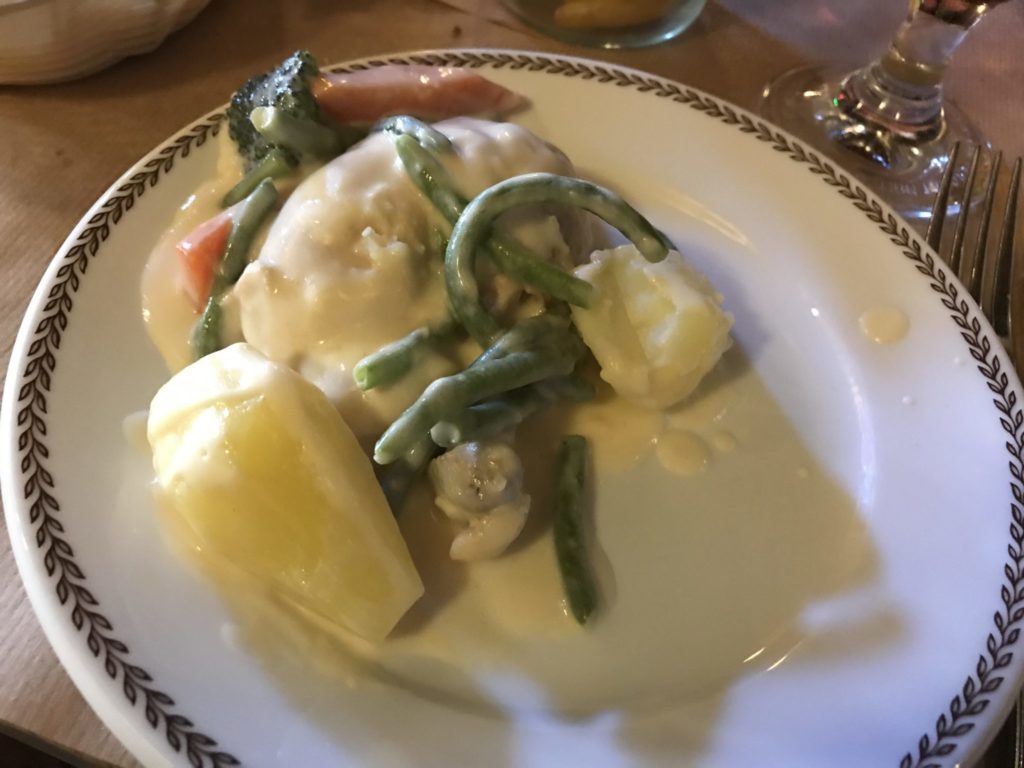
Traditionally made with fish from the rivers surrounding Ghent, this protein in boiled in butter, heavy cream and is perfect for a cool day!
Our guide explained that chicken has replaced the fish because the rivers have become too polluted and chickens are easier and less expensive to raise. However, everything else about the recipe remains the same.
The vegetables, protein carrots leaks, potatoes and seasoning are stewed in a broth of egg yolk, cream and vegetable juice until tenderized to perfection! It practically melts in your mouth!
Carbonade Flammade

This onion and beer based stew nearly made my heart stop. The sweet-savory dish is spiced with thyme, bay leaves, mustard and just before serving, wine viendegar and red currant jelly is stirred in.
The type of beer is very important and traditionally and Oud bruin, Abbey beer or Flanders is used to give the dish a sour flavor while tenderizing the meat.
I tried this dish at La Rose Blanche and used thick slices of local baked bread to soak up all the delish sauce. It was all I could do not to lick the plate.
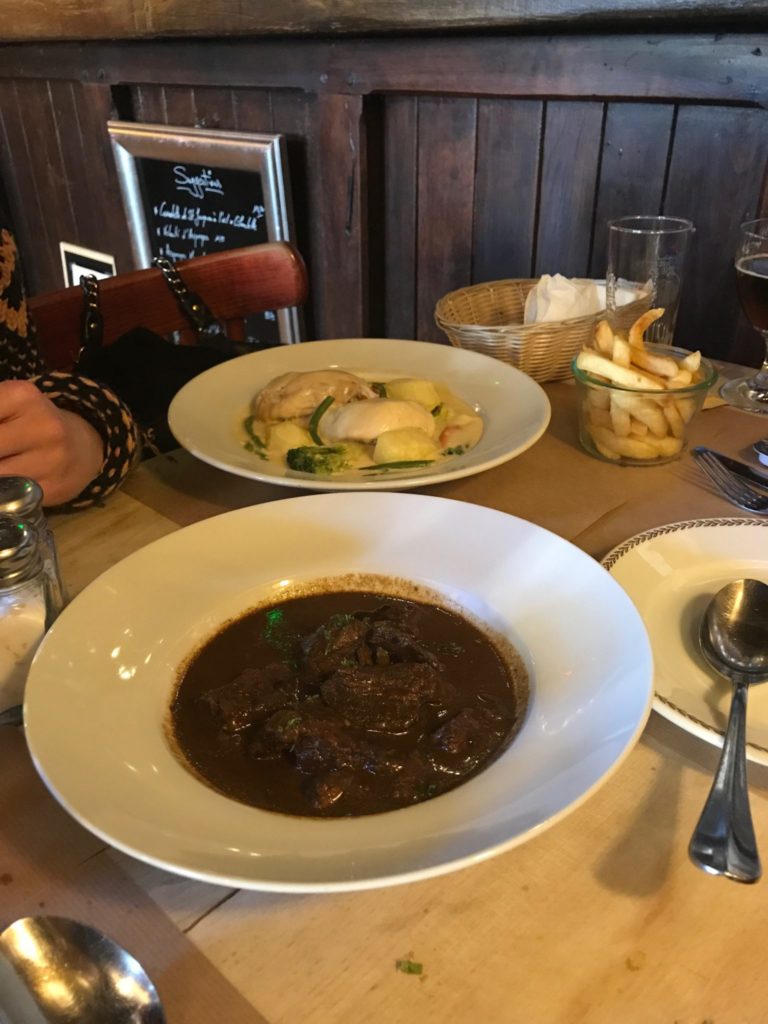
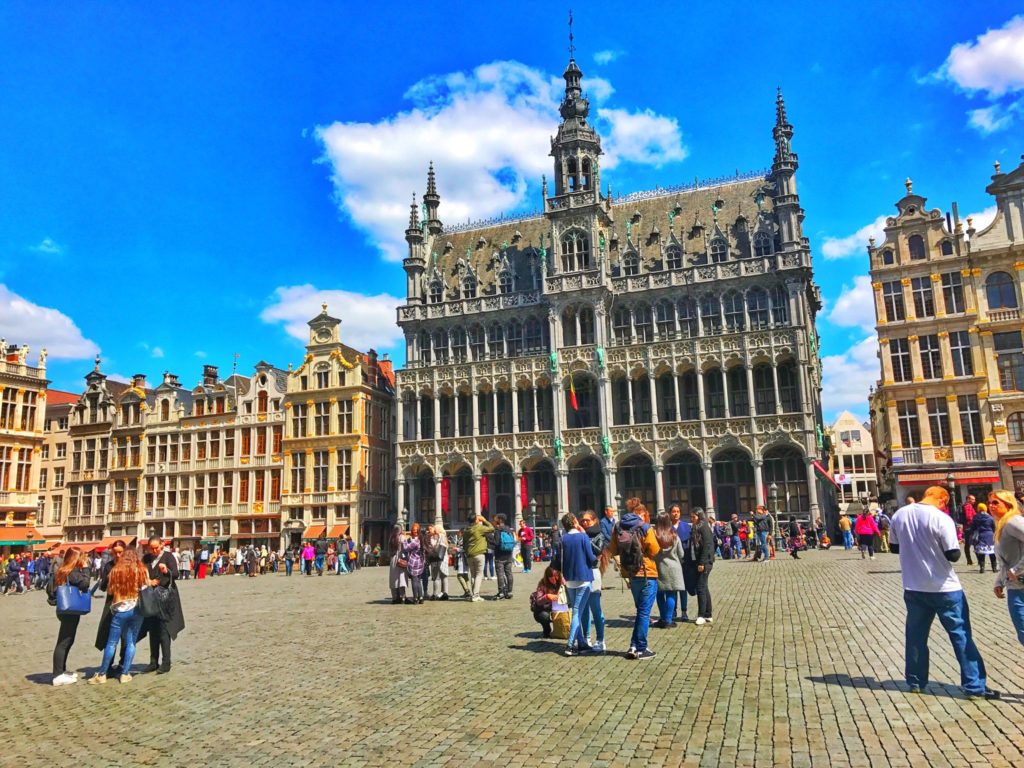
Belgium Chocolate
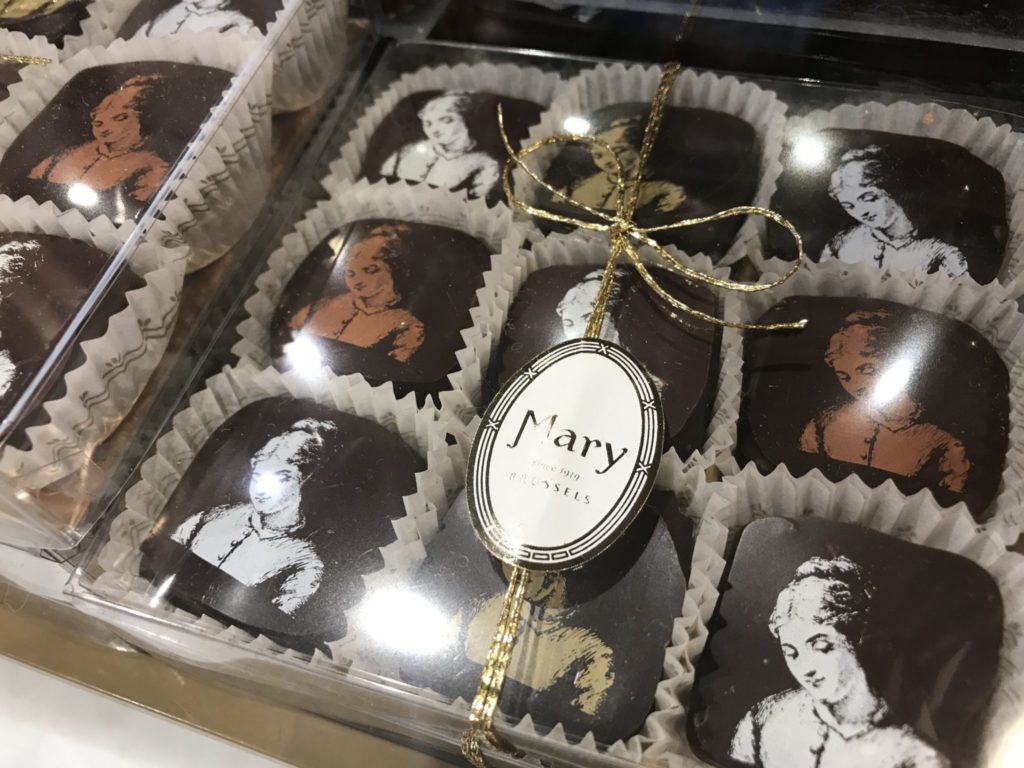
Chocolate and waffles dominate the markets in Brussels and with so many choices it was hard to know where to spend my heard-earned money. But, as I learned on the food tour, no choice is a bad one! Since 1894 Belgian chocolate production has been regulated to ensure each product is at least 35% chocolate and manufactured within the country.
Belgium touts over 2,000 chocolatiers and they export close to 170,000 tons each year. There are some large name brands – does Godiva or Cote d’or ring a bell? But most chocolates are produced by hand in a laborious manner which leads to a prevalence of boutique outlets owned by companies who are known for a specific recipe.
During our tour we visited two chocolatiers, one Elisabeth is a newer boutique and the best place to find a chocolate Mannekin Pis (8 euro) and beautiful chocolate covered candied fruit.
The second shop visited was Mary Chocolatier. Founded by Mary Delluc in 1919, these delicate handmade pralines and chocolates soon became the favorites of the Royal Family and other Nobles who would frequent the shop as they traveled between two of the King’s palaces. The truffle I enjoyed most was the delicious champagne, strawberry praline. This delicate looking chocolate would prove to be the best travel I’ve ever enjoyed. Layered with flavor and one that I’ll dream of.

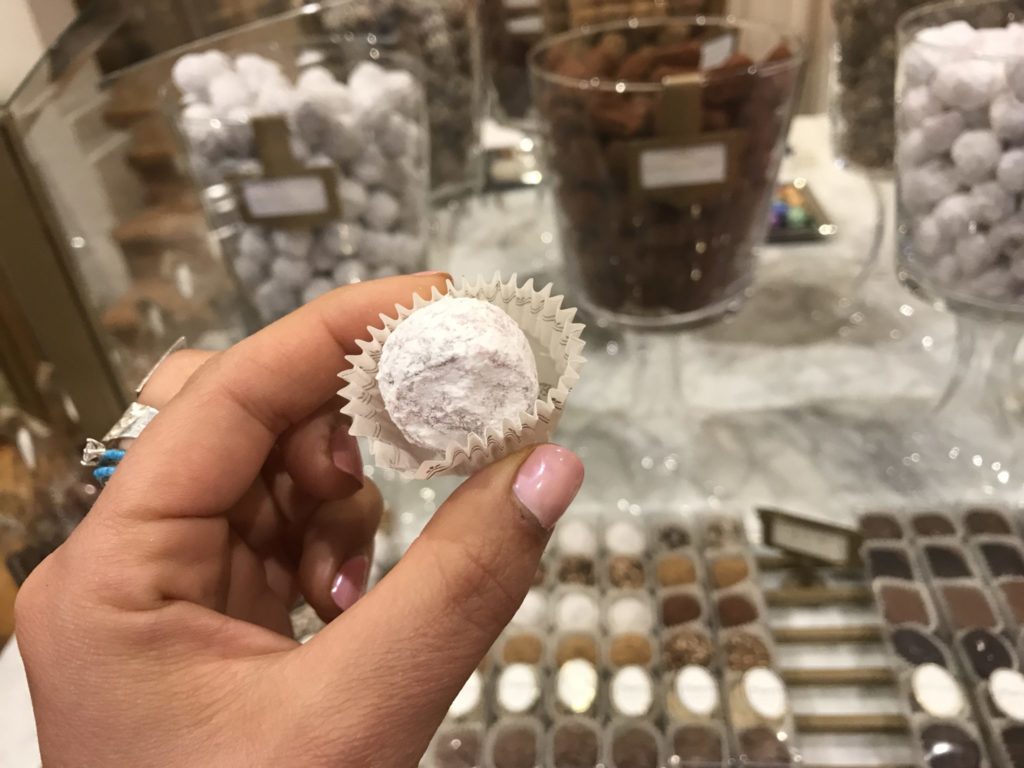
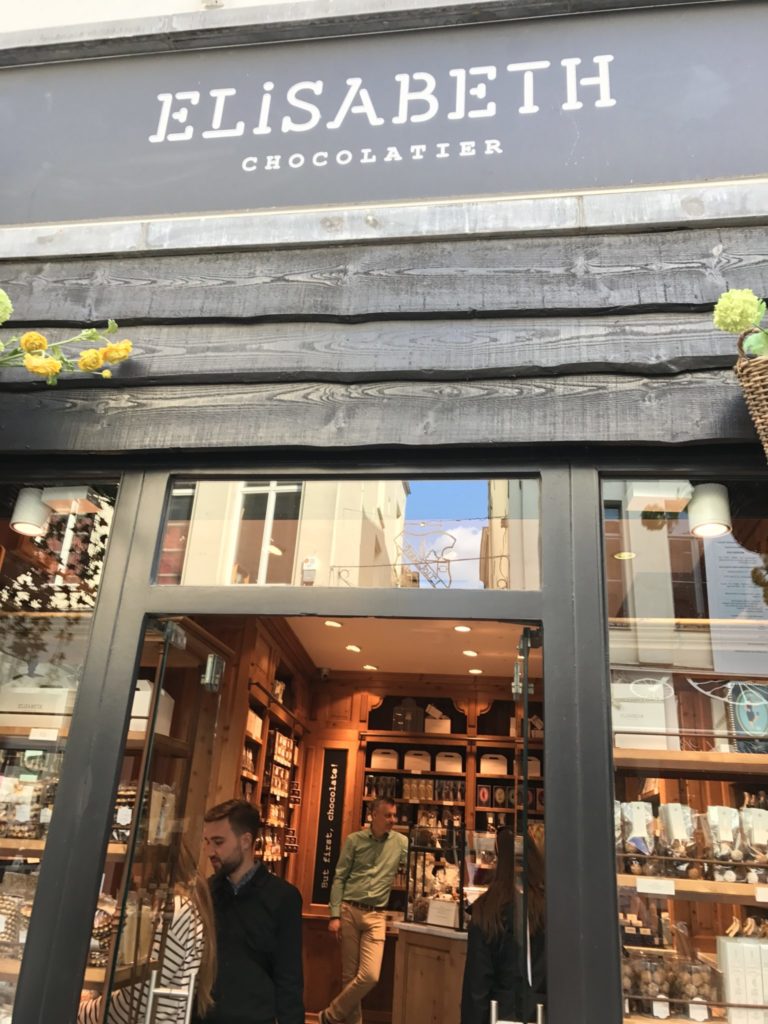
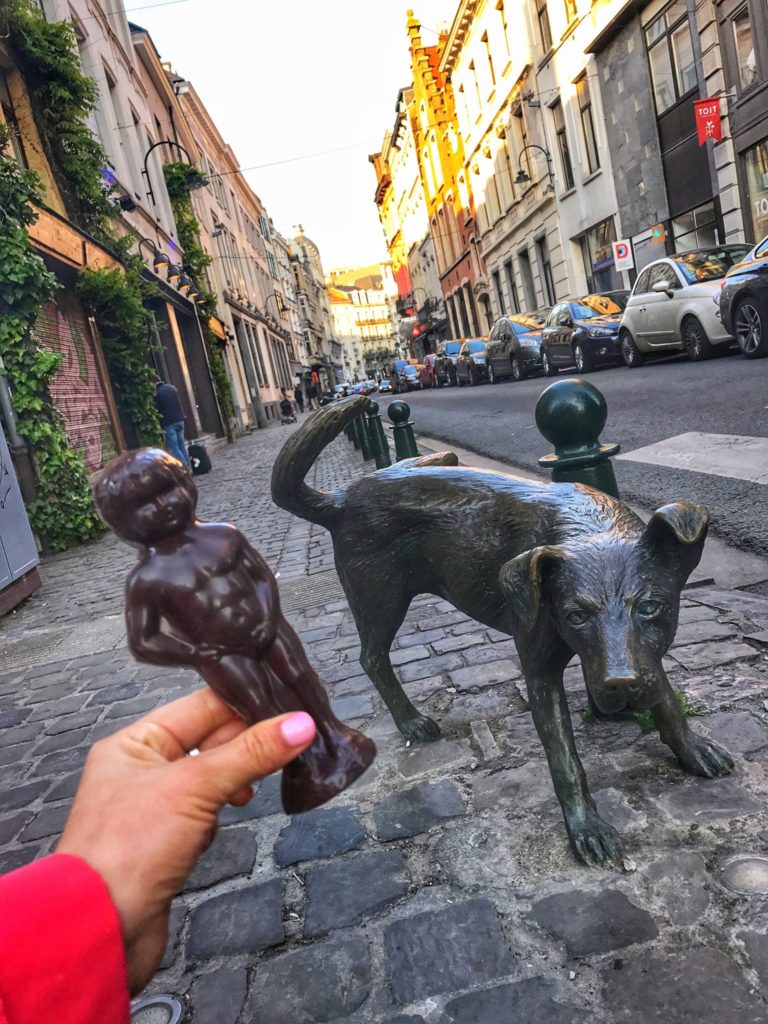
Belgium Waffles
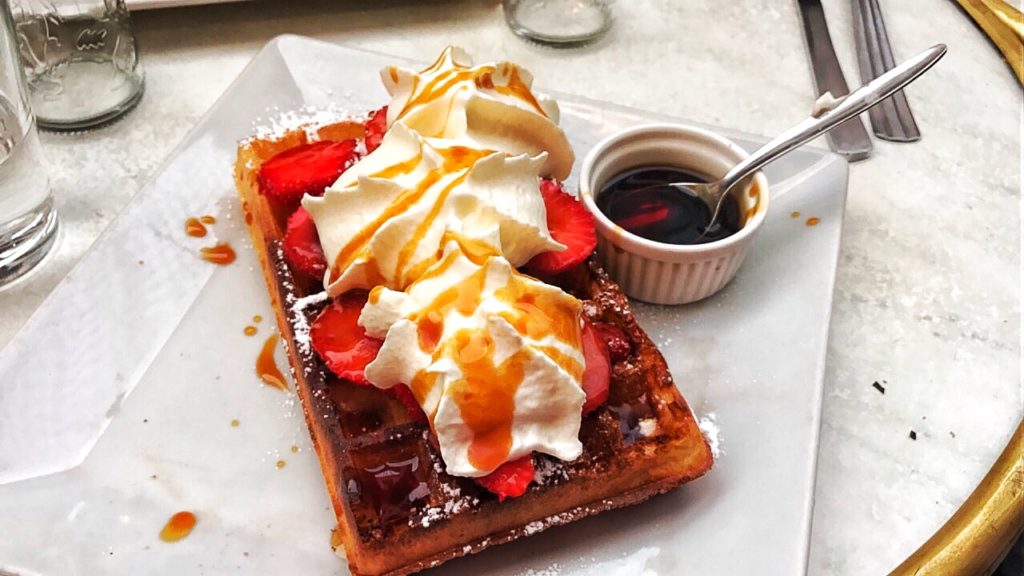
Known internationally and delicious in any form, the waffle is a treat that is practically on every corner in Brussels. Waffles have been tickling taste buds since the 9th century when a communion wafer known as an oublie was created and impressed with an iron that left images of Jesus and the crucifix on the thin batter. Overtime, waffles recipes have morphed in size, ingredients, and flavors but it is Brussels that I enjoy a local recipe that is mouthwatering just to think.
During our food tour, we were taken to Mokafe inside a lovely gallery to enjoy our local specialty without fear of rain ruining our treat. Unlike the more dense, syrup-soaked Liege waffle (also found in Belgium) the Brussels Waffle is prepared with an egg-white batter and ale yeast. The finished product is light, crispy and has deep pockets to be stuffed with layers of fruit, syrup, whip cream and any other sweet topping you desire!
Want a waffle? There is absolutely no need to hunt for a waffle cafe. There are vendors that prepare them hot, street side for only 1.50 euro per waffle!
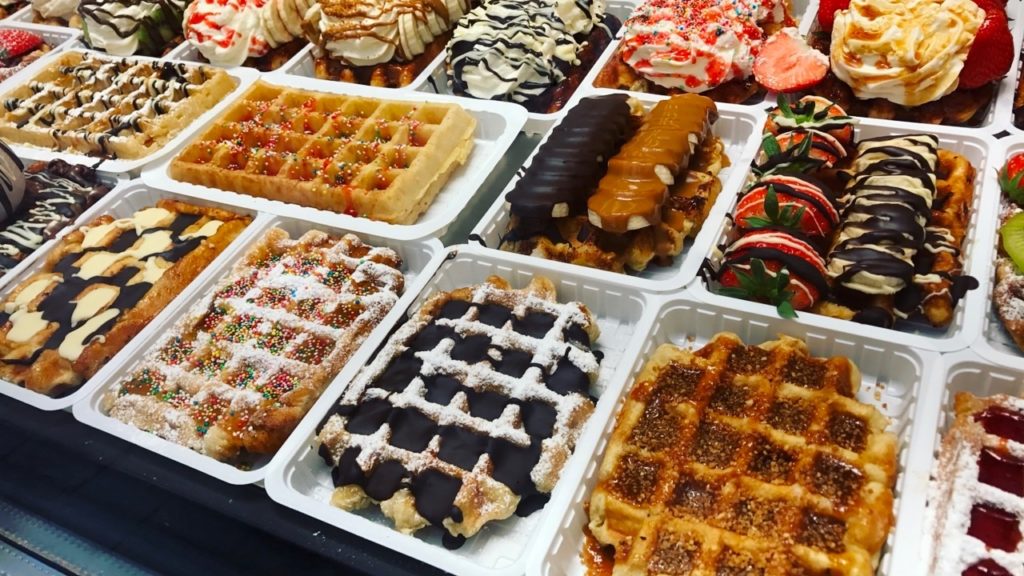

Belgium Beer
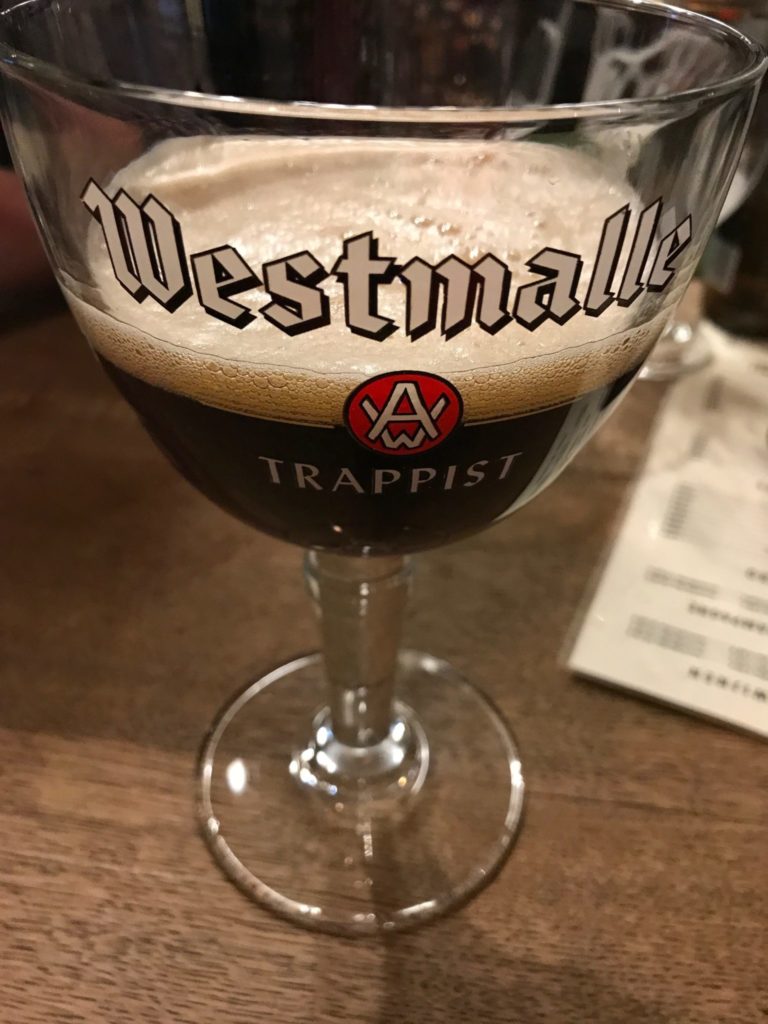
I would never dream of visiting wine country and not giving the local grape a try, so why would Belgium and its beer be treated any differently? After all, they are famous for the varieties and with over 180 breweries in the country, there is bound to be one for every taste bud.
Since the 12th century low alcohol beer was the common drink due to the water supply being polluted and unsafe to drink. Overtime, monks began to make beer as a way to support their monasteries and would evolve into what is now known as Trappist Beers.
The first beer we tried at L’Imiage Notre Dame (a house converted into a local bar) was the famed Trappist beer Westmalle – the first Trappist beer to be brewed in Belgium. It was dark and caramel like, a bit sour but smooth to wash down.
The next drink was a blonde, champagne like beer known as Carous. This drink was said to pair well with chicken and light fish dishes. Any red meat or dessert dishes would be best served with a dark ale.
One fun thing to note: each beer you order has its own special glassware. It not only states the type of beer you are drinking but also is specially designed to allow the drink to stay chill and breathe – a very similar role to wine glasses.
Of the entire food and drink tour, I have to say I most enjoyed the beer tasting! It was the topic I knew the least amount and walked away with a greater appreciation for beer.
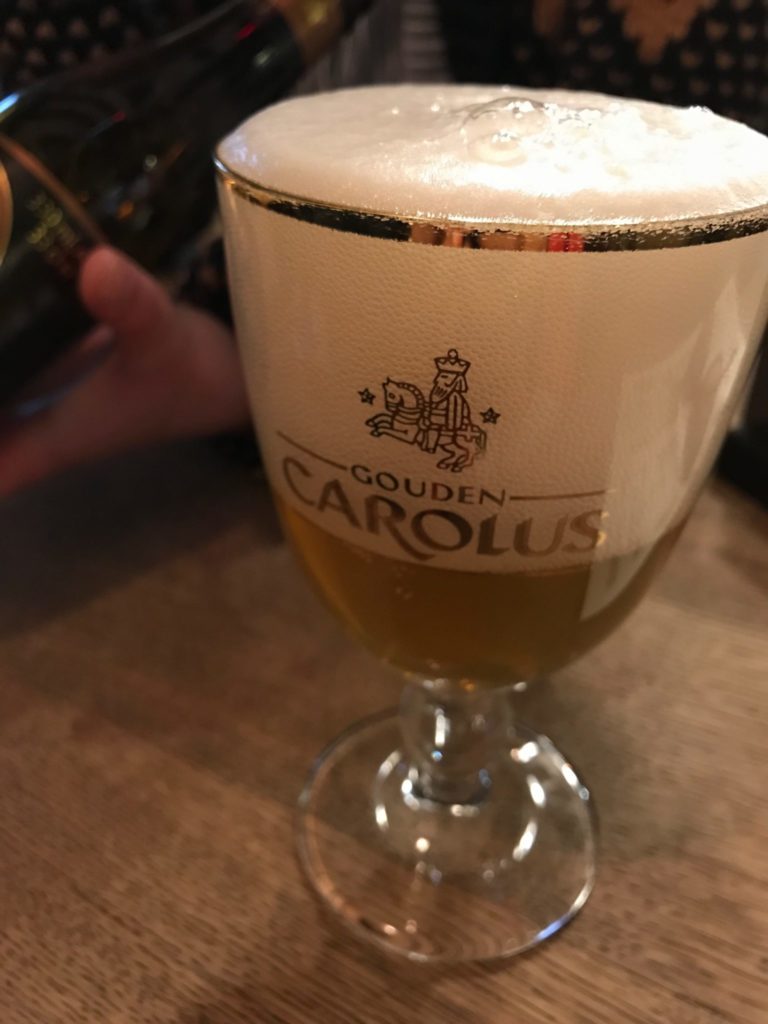

Tip: Other Great Drinking Locations
The city is filled with tiny little pubs tucked away in hidden alleys but the place that receives the most action near Gran-Place is Delirium. This spot is known for having over 2,000 types of brands to chose from.
For a more cozy, intimate experience head to the oldest bar in the city Au Bon Vieux Temps. It’s here that you taste some of the most expensive beers in a local atmosphere.
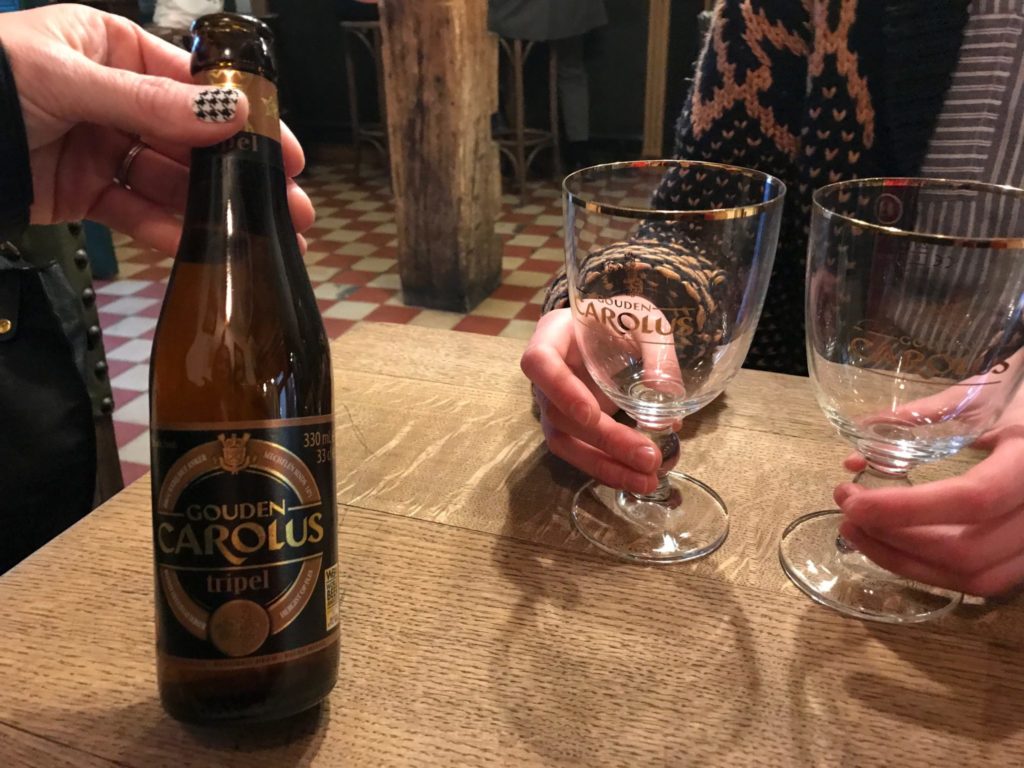
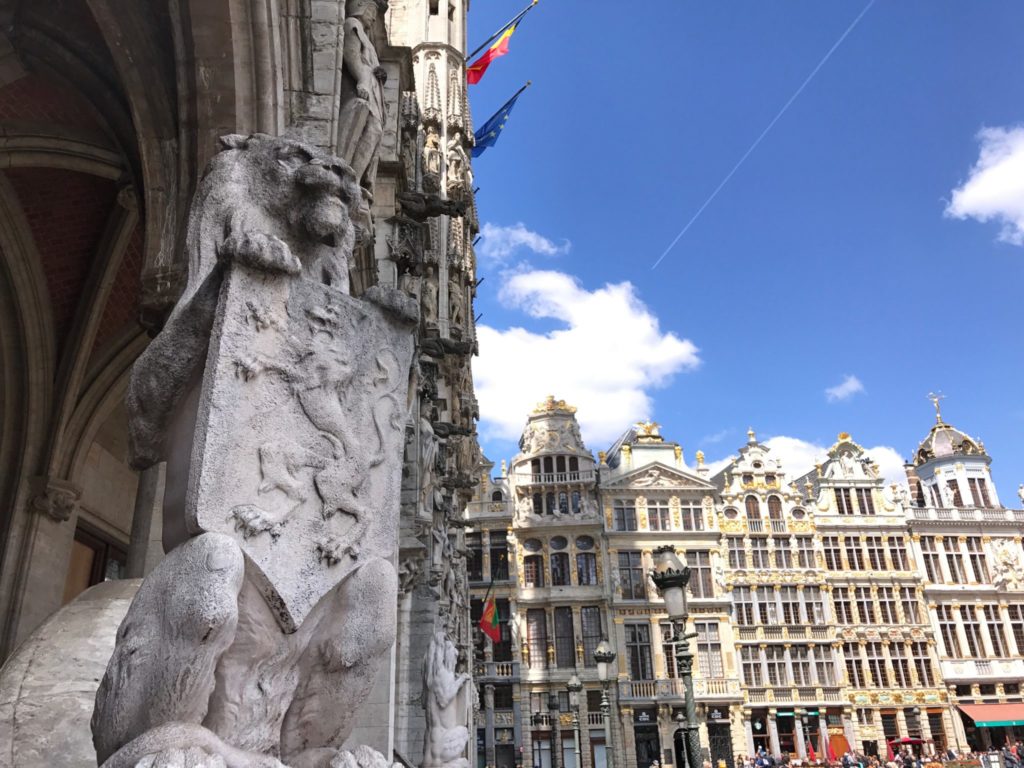
Gallery

